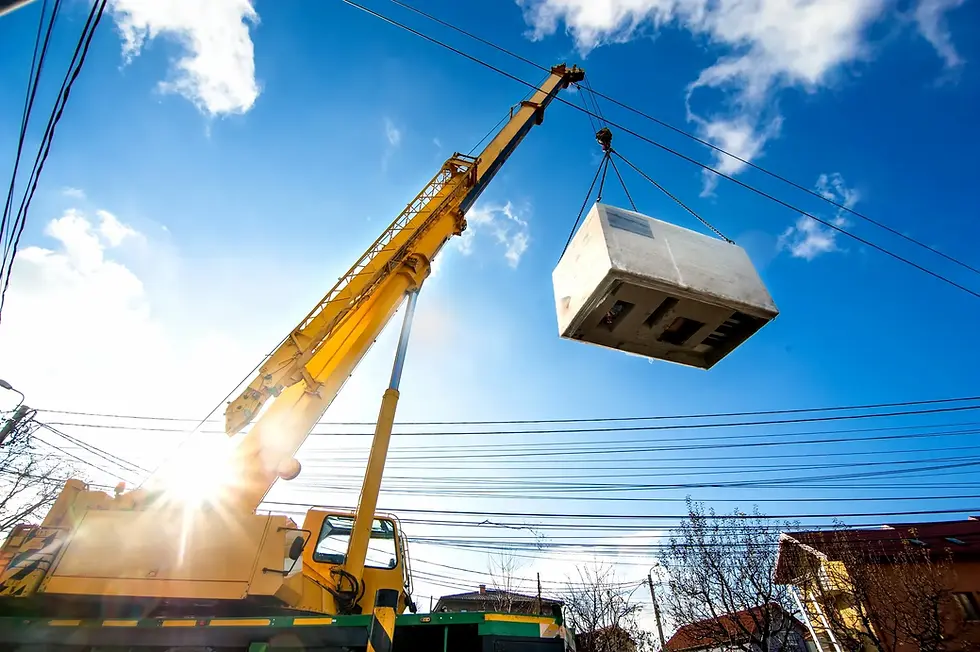A Step-by-Step Guide to Planning Crane Lifting Operations
- Macsalvors Crane Hire
- Mar 19
- 2 min read

Planning a crane lifting operation requires careful preparation, expertise, and adherence to safety regulations. A well-structured plan ensures efficiency and reduces risks, whether for construction projects, equipment relocation, or industrial lifting. Understanding the necessary steps before beginning a lift is crucial for success.
Read on for our step-by-step instructions for planning a safe and efficient crane lift.
Assess the Lifting Requirements
The first step is to assess the lifting requirements in detail. The weight, dimensions, and shape of the load must be considered, as different cranes have varying lifting capacities. The height and reach needed for the lift should also be determined to ensure the crane can position the load accurately.
Ground conditions also play an essential role in stability, so it is vital to check for potential obstructions and assess whether the terrain can support the crane’s weight. Similarly, the site must have sufficient space to allow the crane to manoeuvre safely.
Choose the Right Crane
Selecting the appropriate crane is a crucial step in the process. Mobile cranes offer flexibility and are ideal for shorter-term projects, while tower cranes provide stability for high-rise construction. For lifting operations on uneven terrain, rough-terrain cranes are a suitable option. Consulting with crane rental companies can help determine the best equipment for the job.
Conduct a Site Survey and Risk Assessment
Once the crane is chosen, a thorough site survey and risk assessment must be conducted. Identifying potential hazards, such as overhead power lines, surrounding structures, and underground utilities, is essential to prevent accidents. Weather conditions should also be evaluated, as strong winds or heavy rain can affect stability. Ensuring compliance with safety regulations, such as LOLER (Lifting Operations and Lifting Equipment Regulations), is necessary to meet legal requirements.
Develop a Lifting Plan
Developing a lifting plan is vital to coordinate all aspects of the operation. A clear outline of roles and responsibilities ensures that each person involved understands their tasks. The lifting sequence should be planned in advance, including how the load will be attached and moved. Establishing reliable communication methods, such as hand signals or radio contact, helps ensure a seamless process.
Ensure Safety During the Lift
During the lift, maintaining safety measures is essential. The load should be securely rigged, with all slings and attachments inspected before use. Only authorised personnel should be allowed within the lifting area, and operations should be paused if weather conditions become unsafe. Constant communication among team members helps maintain control throughout the lift.
Expert Crane Hire Services
For professional crane hire services, Macsalvors provides reliable lifting solutions tailored to specific project needs. As one of the leading crane rental companies in the South West, we offer well-maintained equipment, experienced operators, and expert lift planning. Whether a project requires a mobile crane for a quick job or a specialist crane for a complex lift, Macsalvors ensures efficiency and safety at every stage.
Contact us today to discuss crane lifting requirements and find the right solution for your project.






Comments